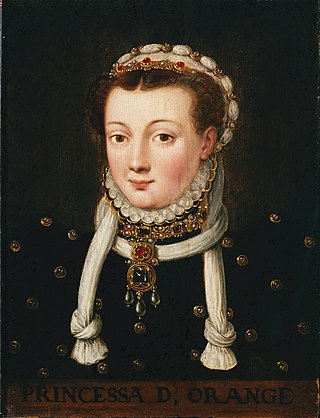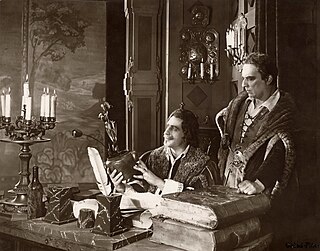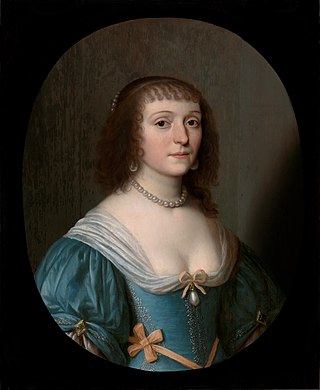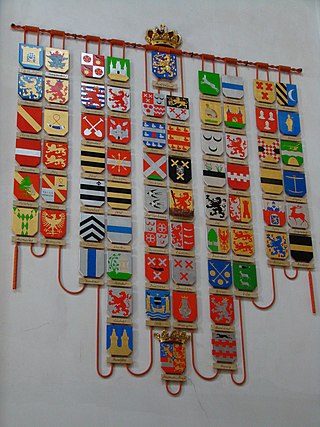
The House of Orange-Nassau is the current reigning house of the Netherlands. A branch of the European House of Nassau, the house has played a central role in the politics and government of the Netherlands and elsewhere in Europe, particularly since William the Silent organised the Dutch Revolt against Spanish rule, which after the Eighty Years' War (1568–1648) led to an independent Dutch state. William III of Orange led the resistance of the Netherlands and Europe to Louis XIV of France and orchestrated the Glorious Revolution in England that established parliamentary rule. Similarly, Queen Wilhelmina of the Netherlands was instrumental in the Dutch resistance during World War II.

William the Silent or William the Taciturn, more commonly known in the Netherlands as William of Orange, was the leader of the Dutch revolt against the Spanish Habsburgs that set off the Eighty Years' War (1568–1648) and resulted in the formal independence of the United Provinces in 1648. Born into the House of Nassau, he became Prince of Orange in 1544 and is thereby the founder of the Orange-Nassau branch and the ancestor of the monarchy of the Netherlands. In the Netherlands, he is also known as Father of the Fatherland.

Prince of Orange is a title associated with the sovereign Principality of Orange, in what is now southern France and subsequently held by the stadtholders of, and then the heirs apparent of, the Netherlands.

Philip William, Prince of Orange was the eldest son of William the Silent by his first wife Anna van Egmont. He became Prince of Orange in 1584 and Knight of the Golden Fleece in 1599.

Princess Wilhelmina of Prussia was the consort of William V of Orange and the de facto leader of the dynastic party and counter-revolution in the Netherlands. She was the daughter of Prince Augustus William of Prussia and Duchess Luise of Brunswick-Wolfenbüttel. Wilhelmina was the longest-serving princess consort of Orange.

Prince Frederick of the Netherlands, Prince of Orange-Nassau, was the second son of William I of the Netherlands and his wife, Wilhelmine of Prussia.

Anna van Egmont, mainly known as Anna van Buren, was a Dutch heiress who became the first wife of William the Silent, Prince of Orange.

Rijk de Gooyer was a Dutch Golden Calf-winning actor, writer, comedian and singer. From the 1950s until the early 1970s, he became well known in The Netherlands as part of a comic duo with John Kraaijkamp, Sr. In the United States best known for having small roles in films such as Nosferatu: Phantom der Nacht, Soldaat van Oranje, A Time to Die and The Wilby Conspiracy.
Nederland en Oranje is a 1913 Dutch silent historical drama film directed by Louis H. Chrispijn. The film features nineteen short pieces with themes from Dutch national history and was made to celebrate the Dutch Kingdom.
Life's Shadows is a 1916 Dutch silent crime film directed by Theo Frenkel.
Gouden ketenen is a 1917 Dutch silent film directed by Maurits Binger.
Oorlog en vrede is a 1918 Dutch silent war drama film directed by Maurits Binger. It is named after the novel War and Peace by Leo Tolstoy, but is not an adaptation of it. It follows three families during World War I. Only a single fragment of the film survives.

The Black Tulip is a 1921 Dutch silent adventure film directed by Maurits Binger. It is based on the novel The Black Tulip by Alexandre Dumas.
The Lion's Mouse is a 1923 British-Dutch silent crime film directed by Oscar Apfel.

The Tars or De Jantjes is a 1934 Dutch comedy film drama directed by Jaap Speyer. The film was a remake of the 1922 film of the same name, which itself was based on a 1920-play by Louis Davids and Margie Morris.
The Van Gybland-Oosterhoff collection of the University of Pretoria in South Africa, collected by and donated by Louise Jeanette van Gybland Oosterhoff (1885–1973) in honor of her brother Dr Horace Hugo Alexander van Gybland Oosterhoff (1887–1937). It was accepted by the university on 22 June 1937 and is the largest collection of objects, publications, memorabilia and photographs of historical interest, relating to Dutch culture outside of the Netherlands.
Koenraad Wolter Swart (1916–1992) was a Dutch-American historian, best known for his work on the role of William of Orange in the Dutch Revolt, and for his doctoral dissertation on the relationship between the state and state functionaries in the seventeenth century.

Princess Mauritia Eleonora of Portugal, Dutch: Prinses Mauritia Eleonora van Portugal, was a princess from the House of Aviz. As a close relative of Prince Frederick Henry of Orange, she spent a long time at his court in The Hague. Later in life she married a count from the House of Nassau-Siegen.

Marquis of Veere and Flushing is one of the titles of the kings and queens of the Netherlands. It was originally a Dutch title of nobility referring to the cities of Veere and Vlissingen, in the southwestern Netherlands. Holy Roman Emperor Charles V created the title in 1555 for his distant relative, Maximilian of Burgundy, who had by then ruled as Lord of Veere. After being held by the kings of Spain and England and claimed by the kings in Prussia, it definitively passed to the House of Orange-Nassau.

Maria of Nassau or Maria of Orange-Nassau was a Dutch princess of the house of Orange and by marriage pfalzgräfin or countess of Simmern-Kaiserslautern.












